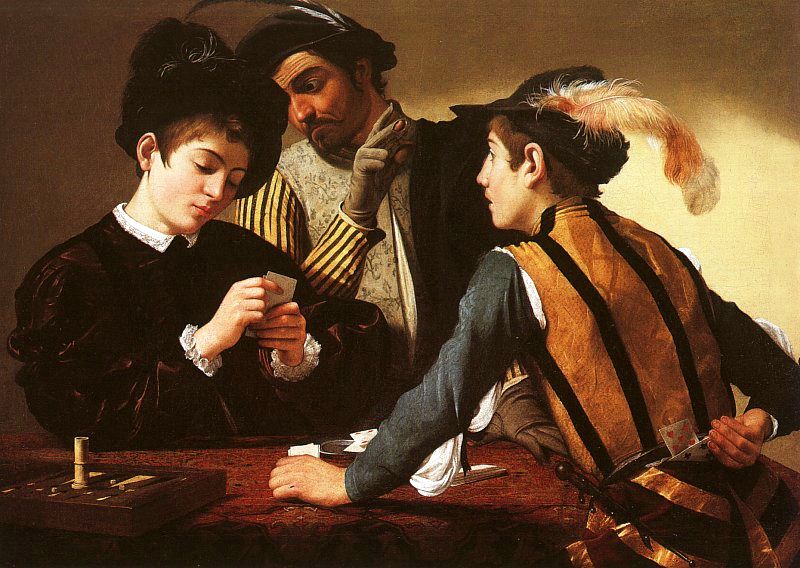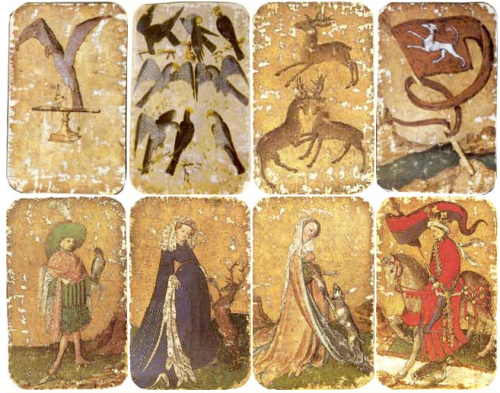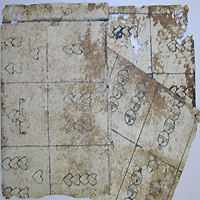 |
| Caravaggio's 'The Cardsharps' (1594) - |
Today's post is of my first attempt at making some Medieval/Renaissance style playing cards. When I started researching them, I was amazed at the range of styles that were available prior to 1700. Some were miniature works of art.
Because I was just starting, I went for a very simple style. I used the same colour scheme as the original set. My cards are made from pasteboard and are coloured with gouache.
This extant set is very similar to my set:
This uncoloured, extant example is also very similar to the deck that I reproduced:
Here are some extant examples of renaissance playing cards:
 |
| Pasteboard German cards c. 1430 - |
http://medieval.tumblr.com/post/5720716068/mediumaevum-dated-c-1430-originally-in-the









.JPG)

These are wonderful! I hope to see them in person sometime!
ReplyDeleteThank you!
ReplyDelete